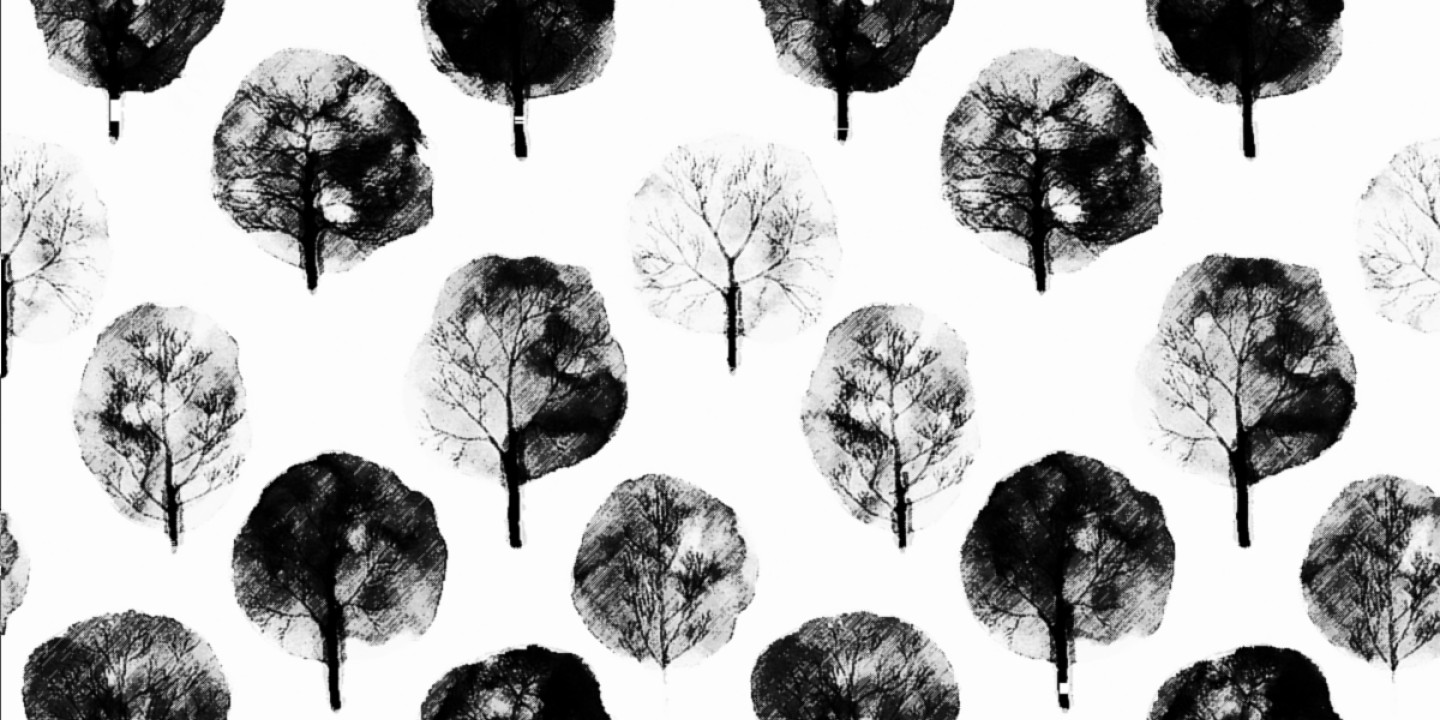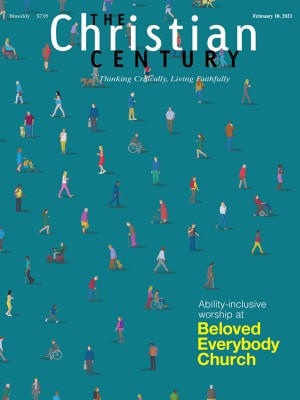Considering the trees on Ash Wednesday
Each tree in my neighborhood is the tree of life.

On Ash Wednesday, we remember that we are dust and to dust we shall return, as God told the first human beings in the garden of Eden. The crosses on our foreheads, the smudged mixture of oil and ashes, are a sign that we are of the ground. “Earth to earth, ashes to ashes, dust to dust.”
In Poetics of the Flesh, Mayra Rivera turns to a section of Tertullian’s third-century treatise on the incarnation, De carne Christi. “What is flesh but earth?” Tertullian asks his reader, “muscles as clods . . . bones as stones . . . mammillary glands as pebbles . . . nerves as roots . . . veins as rivulets . . . hair as grass.” As Rivera summarizes, “each body incarnates the world.”
Read our latest issue or browse back issues.
The ashes remind us that we are earth formations, that the material of our bodies is in solidarity with the rest of creation. All of life sprouts from the earth, flora and fauna together, each as part of the other. My mind hasn’t yet recovered from the shock of reading a medical study several years ago which revealed that more than half of my body is not human—that, at a given moment, approximately 57 percent of my cells belong to other species. I contain multitudes: bacteria, viruses, fungi, archaea, a whole microbiome of life.
Our bodies are microcosms of the world around us. Human life exists as an arrangement of mutual belonging with our environment. “We are coming to understand our bodies as habitats for hundreds of species of which Homo sapiens is only one,” Robert Macfarlane writes in Underland, “our guts as jungles of bacterial flora, our skins as blooming fantastically with fungi.” We are much of what is other to us, each of us teeming with other creatures.
When I’ve preached on past Ash Wednesdays, I’ve said that the ashes confront us with mortality—a reminder that life is a gift, not property, that we have no good reason to tighten our grip on possessions because everything is grace, because existence comes from God. All of that is still true for me. But the ashes this year—after a summer of unprecedented forest fires in the West, blackened landscapes from California to Washington—remind me that we’re in this mess together, this planetary devastation we’ve instigated as human societies.
The palm ashes of the ritual affix us to cremated trees, our skin welcoming their remains into our bodies. The ritual displays our mutual belonging, that the material of their lives becomes ours. This liturgical practice offers a moment to contemplate the features of our relationship—to notice, for example, that we share the intimacies of breath: their oxygen and our carbon dioxide, a rhythm of inhale and exhale, one becoming internal to the other. The breeze carries the trees’ sighs to our lungs, as if conspiring with the God who breathed into the first human beings. Each tree in my neighborhood is the tree of life.
In the eighth century, the tree upon which Christ was killed appeared in a dream to a Northumbrian poet. “I beheld the sorrowful tree of the Saviour,” the author of The Dream of the Rood recounts. “It began to bleed on the right side.” The wounded tree soon moaned sounds that became words. “I was cut down from the edge of the woods. . . . They seized me there, these enemies, who made me into a rood, a spectacle.” The crucified tree describes the moment when the soldiers execute Jesus. “They pierced me with nails; on me are the wounds visible. . . . I was all drenched with blood poured out from that man’s side.” The two are victims of human violence together. The story of Jesus cannot be told without the story of the tree. The crucifixion fastens their identities to one another. And on Ash Wednesday we are drawn into Christ’s relationship to trees, a kind of arboreal sacramentology.
In “Spiritual Arborescence,” historian Sara Ritchey recounts an anecdote about a 14th-century sister for whom trees took on the sacramental reality of Jesus’ resurrected presence. One afternoon at the Dominican convent in Engelthal, Germany, the nuns are walking through the garden when one sister, Alheit of Trochau, rushes to one tree and then another, to all of them in the cloister. She throws her arms around each trunk, pulling it to her heart. After embracing the last one, she turns to address her sisters: “Each tree is our Lord Jesus Christ.”
To receive the sign of the cross is to bear witness to a truth: that we are fragile, our bodies easily broken, our flesh an extension of this endangered world. As Anabaptist Hans Hut pointed out in the 16th century, the Bible often refers to people as trees.
For now, during these brief years together with our neighbors in this habitat, we wear ashes on our foreheads once a year as a kind of prayer—to offer ourselves as a walking plea for the redemption of all creation. For God to redeem our bodies involves a world of material relations, because other lives compose our own. We are composed of reciprocal attachments, bound up in mutual care for a life that possesses all of us. The ashes gesture toward our hope for a resurrection that will mean renewed life for each of God’s creatures.
A version of this article appears in the print edition under the title “Trees and ashes.”







